In the last article, we discussed the history and introduction of intramedullary nail technique in Limb lengthening surgeries; and how its use had clear advantages over standalone external fixator type methods. In this article, we will see the progression of Limb Lengthening Intramedullary Nails around the World; whereby the need for the external fixator is eradicated and the nails are designed as such which allow for distraction or lengthening on their own; without the need for any type of fixation method.
Primarily, there are two types of standalone intramedullary nails available for limb lengthening purposes; mechanically operated ratcheting type and automatic electronically controlled distraction type nails.
Mechanically operated nails – Ratcheting type
ALBIZZIA Nail
The Albizzia nail is a fully mechanically operated lengthening intramedullary nail, which distracts or lengthens with a ratcheting type movement; the patients would need to perform a 20-degree leg rotation, in order for the nail to extend and perform the patient’s daily lengthening. However, the patient needs to be taught how to complete this ratcheting maneuver, which may seem intimidating and painful at the same time. This has been quoted as the primary criticism of the Albizzia nail, but with enough practice and preparation, a patient can perform this maneuver; but needs to be experienced in the how the nail works as each time the patients does the ratcheting movement, the nail makes a click sound, and by counting the click the patient can determine the amount of lengthening done. This technique has been criticized; due to obvious reasons; firstly the counting clicks techniques are not precice and prone to human error; hence the patient can easily make a mistake and lengthen more or less than the daily amount of lengthening determined. Although, the advantage of this nail is that it is fully weight-bearing thus the patients can return to daily life much quicker than external only methods such as Ilizarov or Holyfix.
BETZBONE Nail
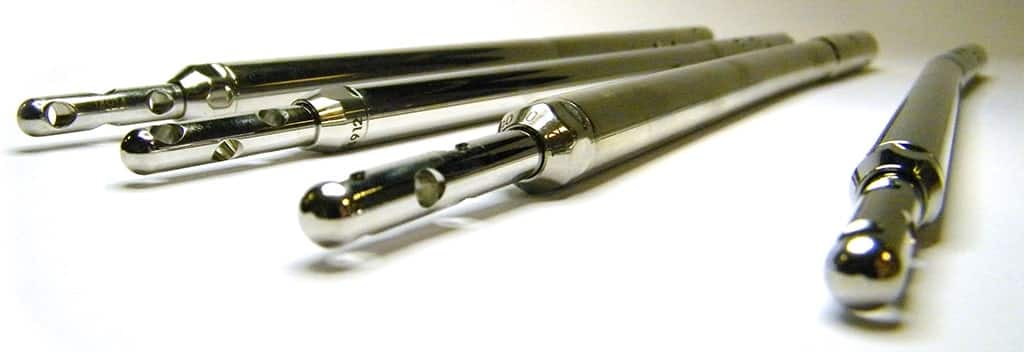
The BetzBone is a revised version of the Albizzia Nail; however, it has been criticized that its system of fixation can leave bones fragile, and at risk of fractures, which often requires a replacement surgery with a static intramedullary nail. This problem leads to more surgical procedures for each patient and has therefore not been used by other surgeons yet.
ISKD OR ORTHOFIX Nail
Even though, the ISKD or intramedullary skeletal kinetic distractor designed over 20 years ago, in 2001, and has only been used in around 300-500 cases; due to the high rate of post-surgery complication, and has seen limited medical use. The ISKD device was designed by J. Dean Cole of Orlando, Florida; as an internal lengthening device, aimed at reducing the risk of post-surgery infections and scarring.
The ISKD system is a telescopic intramedullary nail that can gradually lengthen with the rotary movement of the knees or ankle; all the time, the lengthening rotations are being monitored by a handheld external magnetic sensor; which tracks the rotation of the internal magnet, on a daily basis. The ISKD system requires the physical ratcheting movement for lengthening; however, it has been criticized for its high risk of rapid bone growth, leading to nerve damage or fractures in the bones. The reason this happens is that each time the ratcheting movement is done the magnetic poles without the intramedullary nail change polarity; however, if the ratcheting movement is carried out too quickly the magnetic poles change polarity twice; without recording the lengthen gained; leading to nerve damage and bone breakages. Furthermore, patients have reported some pain associated with the ratcheting movement necessary for lengthening purposes as well.
Due to the high risk of unreportable lengthening and high risk of nerve or bone damage; the ISKD systems did not gain as much popularity and is in limed use in the medical field; although its manufacturer is developing on an improved version of the ISKD system; called “Orthofix”.
The GUICHET Nail
The Guichet Nail is another mechanically operated ratcheting type intramedullary nail designed for limb lengthening purposes and can be used in three different bones: the tibia, the humerus or the femur. The nail boosts height gains possible to 10 cm, however is inundated by the need for 5 to 6 surgical procedures in order to achieve that which dramatically increased the risk of post-surgery complications.
Just like the above nails, it also boasts full weight-bearing capabilities; but suffers from the same inherent problems as all ratcheting type mechanical nails, prone to human error. Secondly, the biggest criticism with all types of mechanical nails is their inability to retrograde or decrease the lengthened amount of the gap. There are certain complications such as non-union whereby the bones do not unify in time and retrograding is a positive therapy to make the bones heal again. With automatic type nails, it is possible and the doctor without the need for bone grafts surgery can just decrease the amount lengthened till the bones start healing again. This is one of the biggest disadvantages for all mechanically operated nails; there is no possibility for the nail to contract back to makes the bones heal again; the only possible with mechanically nails is bone graft surgery, in case of any non-union of bones.
Automatic controlled Nails – Electronically distraction type intramedullary nails
FITBONE Nail
German scientists Betz and Baumgart designed an electronic nail, however, it never got widespread use primarily, due to concerns over its reliability, as well as financial constraints, which also limits its use outside of Germany.
The lengthening process involves connecting to an electrical supply via an antenna, which allows energy to be generated for the motor which lengthens the nail; however, this technology raises the cost of manufacturing the nail. A patient’s ability to recover from the surgery may be similar to other nails; t is limited to the maximum lengthening ability of the nail itself to 6cms. However, the nail does not boast full weight-bearing capabilities, hence the patient is bound by crutches and use of a wheelchair till the lengthening phase is complete and the nails are locked into position. Thus, sports and other physical activities are limited till the point that the bones have consolidated enough to become weight-bearing again and this postpones a fuller, quicker, more functional recovery.
PRECICE 2 Nail
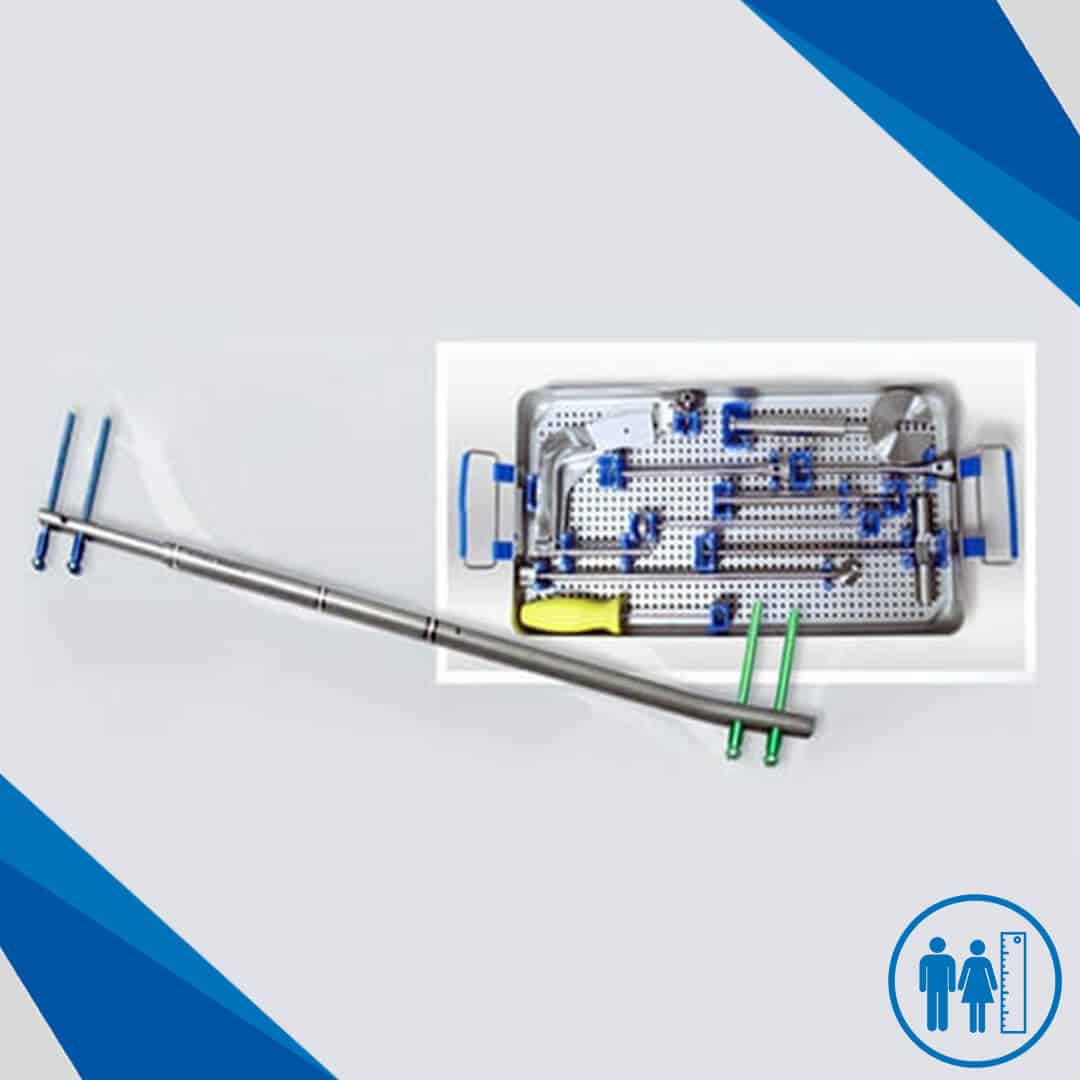
The Precice 2 system is an upgrade to the Precice 1 limb lengthening system by NuVasive (USA) and is among the most advanced and sophisticated lengthening devices available and one of the very limited nail to be FDA (USA) approved for limb lengthening purposes. The Precice 2 was developed in collaboration with Dr. Paley and his vast expertise in limb lengthening; specially designed for limb lengthening purposes. The Precice 2 nail offers up to 8 cm in height gains; and improves upon the older Precice 1 with increased weight-bearing capabilities, and an increase in the nails internal driveshaft connection design, which allows three times more safety, in terms of post-surgery nail mechanical failures rates.
The Precice 2 nail has an accurate rate of lengthening control and patients report minimum pain associated with the lengthening process. The lengthening is controlled by an ERC or an electromagnetic remote control device, which when activated, rotates the gears inside the Precice 2 nail, turning the drive screw, thereby elongating the telescopic nail. One of its exclusive safety features is the ability for the nail to retrograde, or turn in reverse, this helps in controlling ono union of bones; where the doctors ascertain that the bones are not unifying, they can retrograde the nail and let the bones heal enough, before starting lengthening again. This safety feature is of prime importance, in controlling the biggest risk in limb lengthening surgery that is nonunion of bones; which had the usual prognoses of a bone graft surgery, in order for the bones to consolidate and heal.
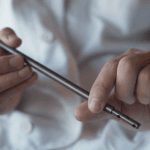
The Precice 2 nail offers up to 3 inches or 8 cm of height gain to its patients, and as a general recommendation from Dr. Paley and his immense experience in limb lengthening; that patients who desire more height should consider a second lengthening of the other pair of bones, and recommends the lengthen the femurs first and the tibias after. The maximums height gain from two surgeries could be as much as 14.5 cm, safely; as Dr. Paley suggests that greater lengthening is not easily tolerated on the tibias, and thus an ideal lengthening of 8 cm on the femurs and 6.5 cm on the tibias, can be beneficial in avoiding serious complications on the tibias if lengthened more than 6.5 cm.
He warns patients not to sacrifice safety for greater height gains and length; and explains that the real limiting factor to lengthening is the patient’s own soft tissues, nerves, and muscles.
He explains that the risk of complications from lengthening can increase dramatically with increased length:
• Low-risk lengthening: up to 5 cm
• Medium risk: 5 to 8 cm
• High-risk lengthening: 8 cm or above
Thus, he suggests that if a patient desires 10 cm or more of lengthening, it is much safer to lengthen the femur and the tibia each by 5 cm than to lengthen either bone by 10 cm.
Furthermore, you can visit our patients galleries to view patients who have had limb lengthening surgeries with Precice 2 and their limb lengthening experiences, in our patient’s success stories.
PRECICE STRYDE Nail
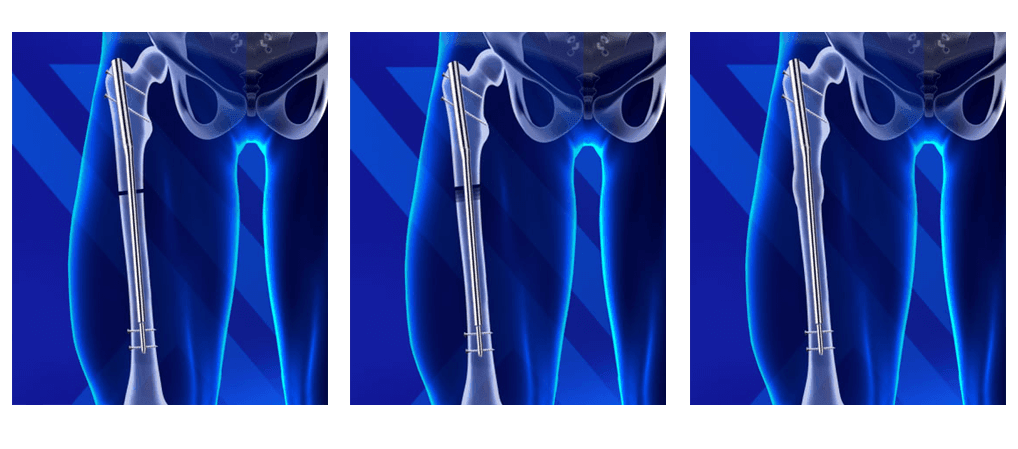
The Precice Stryde represents the latest advancement in the Precice family of products from NuVasive Specialized Orthopedics (USA). It is a 3rd generation advanced solution that builds upon the reputation and efficacy of the PRECICE proprietary technology. Recently, FDA (USA) approved, the Stryde nail is composed of much stronger material and thereby offers a significant increase in nail strength and post-surgery weight-bearing capabilities, from 69 to 114 KGs or 150 to 250 pounds, depending in the diameter of the nail, on each leg with the Stryde nail implant.
The Precice Stryde system builds upon the advantages of technology in Precice 2 and its predecessors. Patients are now able to non-invasively lengthen or shorten the implant to a prescribed length utilizing the ERC post-surgery from their own home versus lengthy hospital stays. When used for stature lengthening for cosmetic purposes, STRYDE can increase a patient’s height by more than three inches per femur or tibia bone
The Precice Stryde system aims at providing a much safer, tolerable, and comfortable post-surgery outcome and experience for the patients. With the older Precice 2 system, the load capacity was limited to 30 to 50 pounds of weight, on each leg, which slowed down post-surgery return to daily life and activities. However, with the Stryde’s unique stainless steel composition, patients are now able to apply 150-250 pounds of weight on each leg depending on the device diameter and post-surgery care advice of their doctor. This allows patients a quicker return to daily life and several studies have shown earlier weight-bearing may lead to quicker healing times in patients using the PRECICE system.
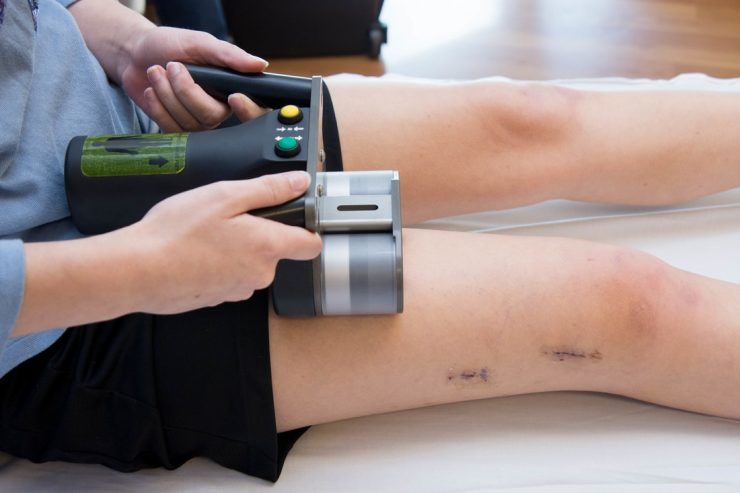
The Precice Stryde nail offers the same accurate and controlled lengthening as older Precice devices, with the same safety feature of retrograding or shortening of the nail, with just a touch of a button on the Precice External Remote Controller (ERC). The ERC allows for accurate programming for lengthening, based on the doctor’s recommendations, followed by weekly clinical and radiographic evaluations that are performed to confirm lengthening and to calculate new bone formation.
The Precice Stryde system provides the following advantages with a minimally-invasive approach to limb lengthening and includes:
• Increased weight-bearing capabilities
• Proprietary magnetic lengthening control technology
• Precision rate control of lengthening
• Non-invasive adjustment via external remote controller
• Customizable lengthening protocol based upon the doctor’s medical advice
• Device is reversible or can retrograde
Conclusion
Since the early 1970s, numerous intramedullary lengthening nails have been established to evade the numerous complications caused by long periods of external fixation. However, many of these innovations have displayed problems; some associated with the lengthening mechanism or some with the strength of the nail which resulted often result in disappointing results.
It must be noted that many complications that happen during the lengthening phase, such as pain, mechanical failure, and imprecice lengthening rate control, can occur mostly due to the device itself and are not under the control of the doctor.
Thus far, only ISKD and PRECICE have received FDA approval, and each is activated by different mechanisms. In a recent study comparing ISKD and PRECICE 1 and 2 nails, it found that the lowest rate of overall device-related complication was seen in PRECICE 1, lowest device-related problem in PRECICE 1 and PRECICE 2. PRECICE nails showed less distraction control-related complications and less pain, but more mechanical strength and weight-bearing related complications than ISKD.
However, issues with the lengthening rate and control have been the major reported disadvantage of the ISKD system; and it must be kept in mind that a predictable control on the rate of lengthening and distractions is key for callus regeneration, soft tissue adaptation, and pain in a limb lengthening surgery. An uncontrolled rate of distraction can often result in nonunion or premature consolidation of the bones, soft tissue damage, and severe pain. The study had conclusively observed an abnormal distraction rate of 60% with ISKD systems, and many studies have reported poor bone regeneration rates which are linked to ISKD distraction rates being too high. In comparison, the overall rate of device-related problems was 60% for ISKD, verses 8.8% for Precice 1.
At the same time, the pain has been one of the primary disadvantages with mechanically operated nails, requiring rotary motion for distractions, as Guichet reported an average of one additional surgery on each limb due to ratcheting under general anesthesia using Albizzia nails. It has been reported that in 13% of the cases, the patients wanted early termination of lengthening due to severe pain during ratcheting motions. On a VAS pain scale, ISKD lengthening has been reported to be at a level of 7-8; while the Precice systems, are much lower at 3-4. The Precice systems have these advantages over ISKD due to a lack of any rotational movement for lengthening and accurate rate of distraction control during lengthening.
In conclusion, the analysis of intramedullary nails used of distractions have come a long way from their first appearance and use in limb-lengthening surgeries, and with latest and 3rd generation systems like Precice Stryde, which builds upon the deficiencies of the old nails; the future for limb lengthening aims towards a much more comfortable and safe limb lengthening experience for patients.
For detailed information and appointment:
Phone & WhatsApp: +90 531 988 30 90
Email: support@wannabetaller.com
Instagram: @wannabetaller
